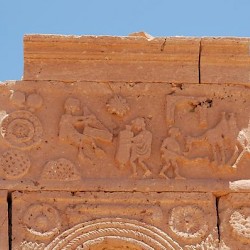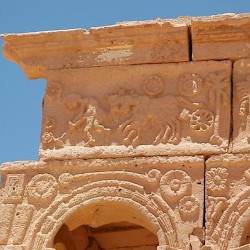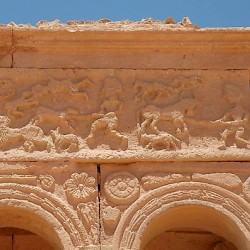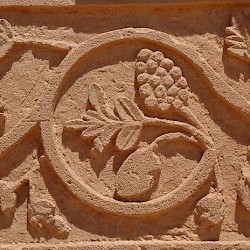Ghirza: Mausoleum North-C
Q69121906Ghirza: Roman town in Libya, one of the main archaeological sites of the country.
Ghirza: Mausoleum North-C
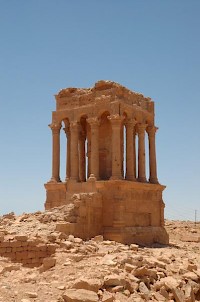
Ghirza's North Cemetery is about half a kilometer west of the center of the desert town. Unlike the tombs on the South Cemetery, which look like obelisks, the mausoleums of this cemetery resemble temples, comparable to the mausoleum of Qasr Banat. In Graeme Barker e.a., Farming the Desert. The UNESCO Libyan Valleys Archaeological Survey (1996), the North Cemetery of Ghira is known as Gh129.
Mausoleum C was built by Marchius Nimmire and Maccurasan for their parents Marchius Chullam and Varnychsin. The builders, Nimmire and Maccurasan, almost certainly represent the fourth generation of Marchii buried on Ghirza's northern necropolis and must have lived in the last quarter of the fourth century.
Like Mausoleum A and Mausoleum B, this monument was built on a high platform, and faces east, to the place where the sun rises and to the village where the dead used to live. The monument is surrounded by classical columns - Corinthian ones this time. On the west and south sides, the friezes have survived. On the west side, we can discern two people: one of them is playing a harp, the other is carrying an amphora. To the right, we can see a man feeding a dromedary standing in front of a small gate.
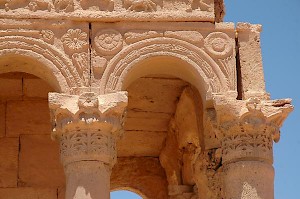
The well-preserved relief on the south side shows, from left to right, a man watering flowers, two oxen, two date palms, and two hunting scenes. The first of these shows a man directing a spear against an animal that looks like a hyena; we can also see a lioness, the hunter's dog, and a man who has been killed and is being devoured by a hyena. The second scene shows a hunter and two dogs attacking a wild bull. On the spandrels, flowers are depicted and fishes, a very common motif in the art of the Sahara (and still used on Libyan textiles).
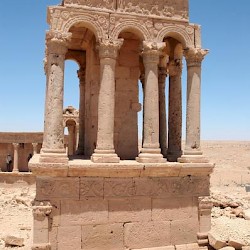 Ghirza, Mausoleum North C |
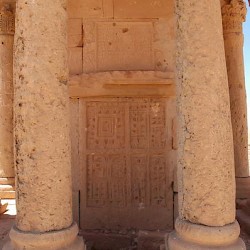 Ghirza, Mausoleum North C, false door |
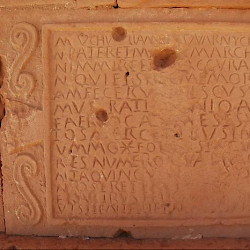 Ghirza, Mausoleum North C, inscription |
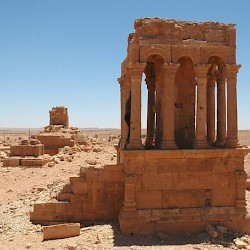 Ghirza, Mausoleum North C |
